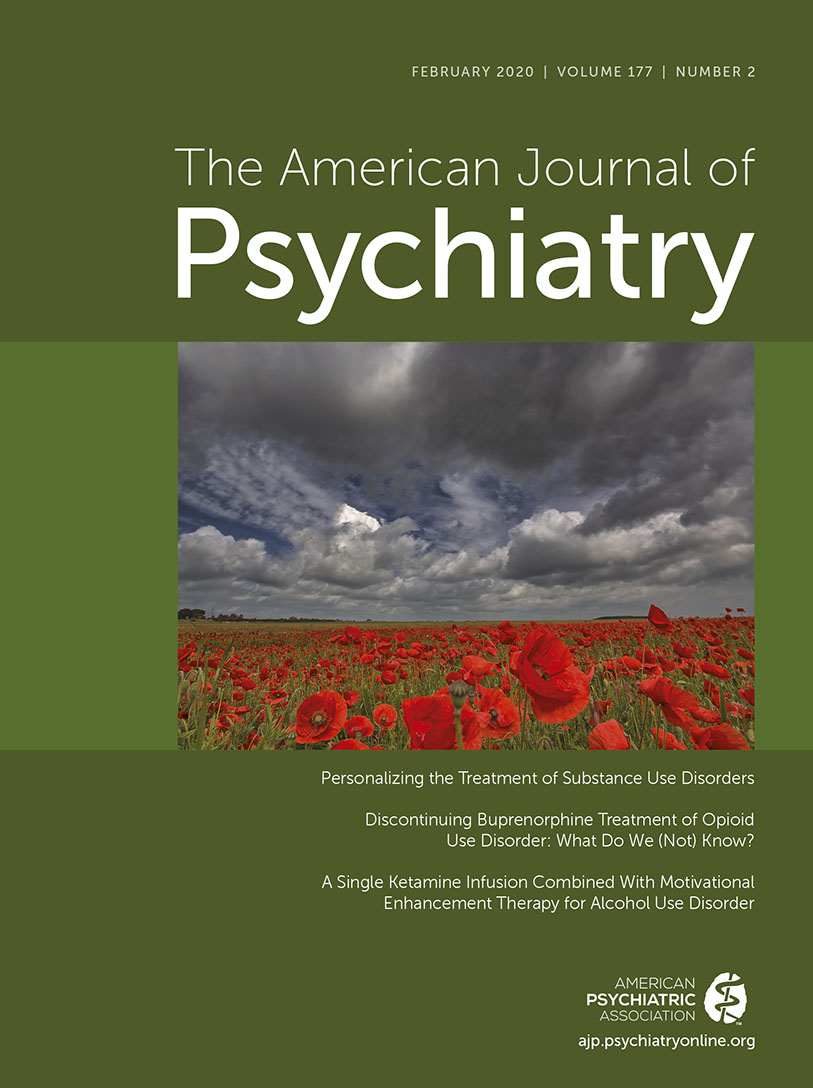All Suicidal Ideation Is Not Created Equal: Two Cases of Suicide Attempts During Maintenance Ketamine Treatment
to the editor: In randomized controlled trials, ketamine has been shown to rapidly decrease suicidal ideation in patients (1, 2). However, even when suicidal ideation improves with ketamine treatment, patients remain at relatively high risk of suicide attempts. Indeed, follow-up of esketamine studies revealed three cases of completed suicide (3). Here, we report on two patients who attempted suicide during maintenance treatment with intranasal racemic ketamine at our clinic.
Case 1
A 56-year-old man with severe treatment-resistant depression since age 19 and several suicide attempts by overdose and carbon monoxide poisoning underwent multiple antidepressant trials, ECT, and transcranial magnetic stimulation. After one intravenous ketamine infusion (1 mg/kg), his depressive symptoms remitted, and he successfully transitioned to maintenance treatment of 60 mg of intranasal ketamine every other day for 2 years, with no suicidal ideation. Stressful life events (family members’ deaths and a deteriorating marriage) contributed to a sudden worsening of the patient’s symptoms. An increased ketamine dose with confirmed adherence, antidepressant adjustments, and psychosocial interventions were unsuccessful, and the patient died by suicide (carbon monoxide poisoning).
Case 2
A 35-year-old woman with severe treatment-resistant depression, anxiety, and posttraumatic stress disorder (PTSD) since age 14 had a prior suicide attempt by hanging and a 6-year current depressive episode. She began intranasal ketamine treatment as an adjunct to 300 mg/day of bupropion and 225 mg/day of venlafaxine, with relief of depression and PTSD symptoms, and she continued treatment of 200 mg of intranasal ketamine every other day for 17 months. Without any reported triggering event, she discontinued ketamine for a week and attempted suicide by overdose. After hospitalization, she restarted intranasal ketamine plus antidepressant medications and has been in remission for 8 months.
Intranasal ketamine can be efficacious for patients with treatment-resistant depression and suicidal ideation. In the past 3 years at our clinic, we have treated more than 70 patients, and 33 patients currently are on maintenance treatment. Both patients described above experienced an early, robust response to ketamine, maintained for 1 to 2 years. Although the second patient might have experienced a rebound effect or withdrawal from abrupt discontinuation, the first patient was compliant, with adherence verified by family members.
Ketamine may improve factors associated with suicidal ideation, such as hopelessness; however, different types of suicidal ideation may arise in the same patient. Multiple risk factors for suicide attempt are stable (e.g., prior attempts or trait impulsivity), while others fluctuate over time, and only some are targeted by ketamine. We have limited safety data on long-term ketamine use, such as data on tolerance, withdrawal, and possible risks associated with discontinuation. In our experience, tolerance is rare, even after years of treatment. Our patients, who were severely depressed and chronically suicidal and had symptoms that did not respond to treatment, did not exhibit withdrawal or cravings upon discontinuation but returned to baseline severity. Clinicians with patients on ketamine should nonetheless remain vigilant, and clinicians should closely monitor patients for signs of nonadherence and depression or recurrence of suicidal ideation.
1 : Ketamine for rapid reduction of suicidal thoughts in major depression: a midazolam-controlled randomized clinical trial. Am J Psychiatry 2018; 175:327–335Link, Google Scholar
2 : The effect of a single dose of intravenous ketamine on suicidal ideation: a systematic review and individual participant data meta-analysis. Am J Psychiatry 2018; 175:150–158Link, Google Scholar
3



